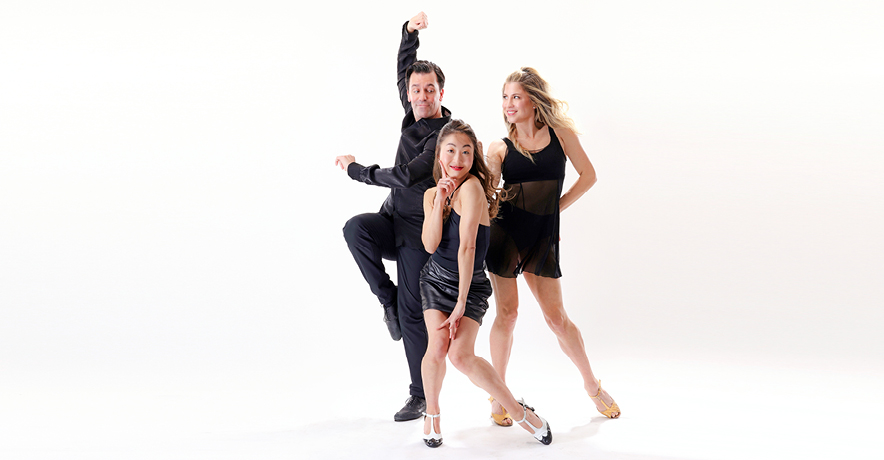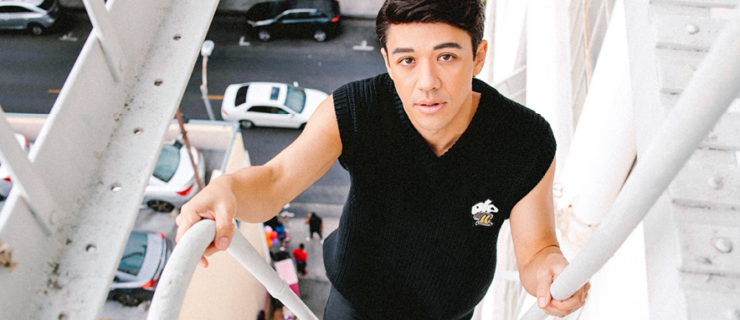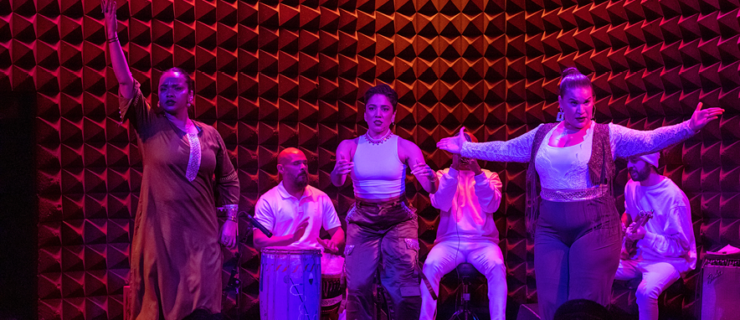Susan Stroman and Her Team Put the “New” in New York, New York, Reimagining the Movie for Broadway Today
Martin Scorsese’s 1977 movie musical, New York, New York, was an event, but not really a hit. Those old enough to remember it at all recall the testy romance between the characters played by Robert De Niro and Liza Minnelli, the blatantly phony New York sets, and, of course, the title tune by John Kander and Fred Ebb, which over the years has become the city’s unofficial anthem. The dances by Ron Field, the Tony-winning choreographer of Kander and Ebb’s Cabaret, are all but forgotten. With Susan Stroman in charge of the new stage musical New York, New York, opening April 26 at the St. James Theatre, the dancing will be front and center. Like Jerome Robbins and Bob Fosse before her, she’s a director-choreographer who should really be called a choreographer-director. In this show, she gets the leads and other citizens of the city that doesn’t sleep dancing in its streets, nightclubs and ballrooms; in Penn Station, Grand Central Terminal, Central Park and on an I-beam at a construction site. “We make New York City definitely a character in the show,” says Stroman.
“When you have an idea for a new musical,” she says, “it usually comes from someone handing you a novel or a screenplay. Or you can even have a vision—of a girl in a yellow dress or something.” New York, New York arrived in a less predictable way, as Stroman, 68, and her longtime friends and collaborators, composer John Kander and writer David Thompson, were trying to come up with another project to do together. Although her five Tony Awards—Crazy for You, Show Boat, Contact and The Producers (2!)—were for work with other creative teams, her history with Kander and Fred Ebb began in 1977, when she played Hunyak in the touring company of Chicago. Her first Broadway credit with Thompson was 1997’s Steel Pier, with music and lyrics by Kander and Ebb. All three (and Ebb, who died in 2004) earned Tony nominations for The Scottsboro Boys, the daring and brilliant 2010 musical about the notorious railroading of nine young African Americans falsely accused of rape in Alabama in 1931, after which the trio went back off-Broadway, breathing audacious theatrical life into Henry James’ novella The Beast in the Jungle (2018). Which brings us to New York, New York.
Moving Beyond the Movie
“We thought if we could get the rights to the movie,” Stroman says, “and permission to do a new story, we would be able to use the songs to tell a story that would be more palatable for a contemporary audience.” MGM said yes, and so did producer Sonia Friedman when they presented the idea. So they decided to make a new New York, New York, emphasis on the word “new.” They augmented the creative team, enlisting Kander’s buddy Lin-Manuel Miranda to add lyrics for many of the 13 new songs and Stroman’s friend Sharon Washington, who was in Scottsboro Boys and is also a writer, to work on the book with Thompson. They started in March 2021, and the result, Stroman says, is “suggested” by the film and “inspired” by Ebb’s lyrics to the title song: “If I can make it there, I’ll make it anywhere.”
Like the movie, the show centers on the relationship between an aspiring singer and an ambitious musician who come to the city in the heady, exuberant moment after World War II. But the new couple is interracial (Colton Ryan as Jimmy and Anna Uzele as Francine), and their story intersects with those of freshly invented characters—two Cuban immigrants, a Polish refugee, an English theater producer, an African American just back from the war, a violin teacher and the know-it-all native New Yorker who’s Jimmy’s best friend. And nobody leaves the city. “The movie took place in L.A. and down South,” Stroman points out. “It wasn’t really in New York much.”
For the Broadway rendition, New York is the whole point. “It’s the story of people coming from everywhere to do something they couldn’t do anywhere else,” Stroman says. “People come to New York to change their lives”—as she had when she left Delaware, and as Kander (Missouri) and Thompson (Illinois) had as well. In 2023 New York, she sees echoes of the story’s post–World War II time frame: “People were hopeful, and they were also pulling plywood off of storefronts and giving smallpox vaccinations,” she explains. “After what we’ve all been through with the pandemic, it’s as if New York needs this show—to show how resilient the city is, to show that we will come back. We have the worst snowstorms, we have the worst plagues, we have the worst terrorist attacks. But we always come back.”
The Creative Process
A three-week workshop at the start of 2022 went so well that only a year later, Stroman was starting rehearsals, posing her signature opening question to the assembled cast: “What’s better than putting on a Broadway show?” A week later, when I ask how things are going, she exclaims, “Glorious! I am lucky to have many beautiful dancers to work with.” But luck has nothing to do with it. From Akina Kitazawa, a swing taking her first Broadway bow, to Clyde Alves, a Broadway veteran who debuted in Stroman’s Music Man in 2000 and worked for her again in Oklahoma! and Bullets Over Broadway, the dancers (see “Meet the Dancers” below) are there because she is. The show resonates, too, of course—much of the cast, like much of the Broadway community, came to New York from elsewhere. Kitazawa says she fell in love with Stroman as a girl in Japan, watching a video of Crazy for You; Alves says that he’s never experienced a more disciplined, professional rehearsal room, or Stroman’s way of balancing thorough preparation with spontaneity. “It creates a really beautiful platform for you to jump off of,” he says.
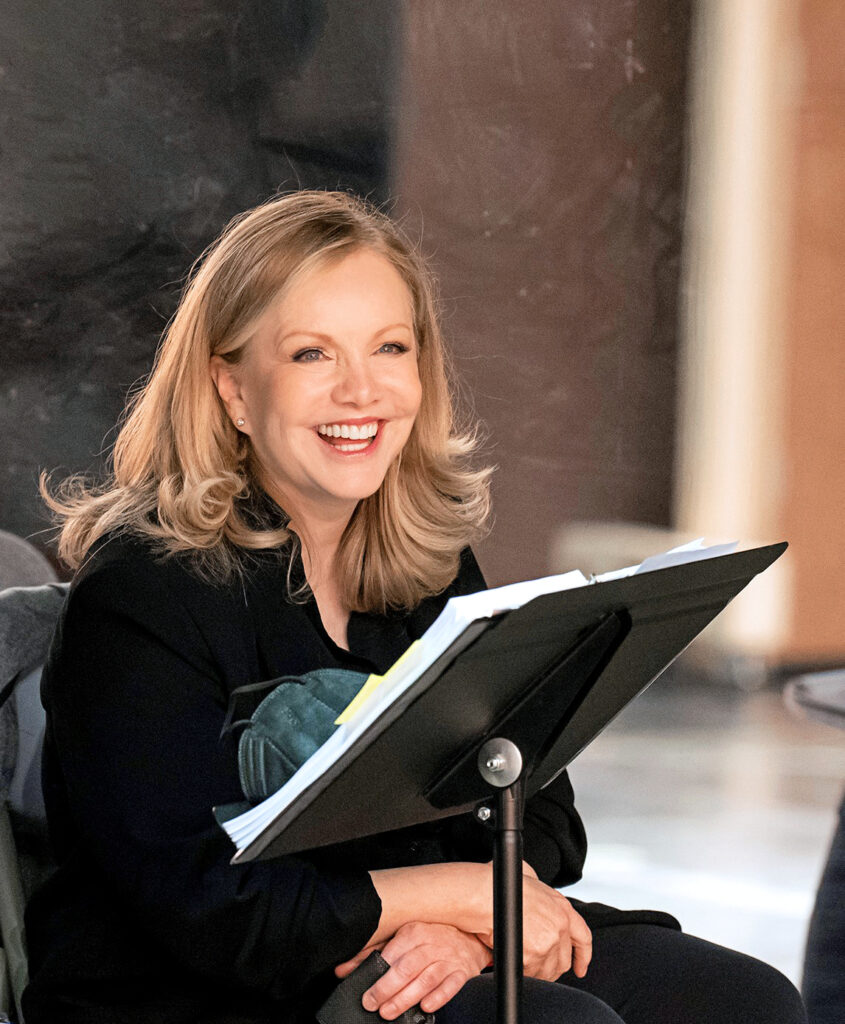
Chita Rivera Award–winner Ashley Blair Fitzgerald (The Cher Show) hasn’t worked with Stroman before and was shocked to find her already considering the timing of costume changes during pre-production. “I’ve never seen a director-choreographer go that far into detail and have that much respect for their actors and dancers onstage. They get to it eventually, in tech, but they don’t think about it seven weeks before setting foot in the theater!” And she echoes Alves’ admiration for Stroman’s mix of efficiency and openness. “She does not waste a second of your time—every second is carefully thought out,” she notes. “Even if a curveball comes in, she’s allowed time for curveballs. She gives performers the ability to bring themselves to the room, as opposed to feeling like they have to fit into a cookie-cutter world.”
Making New York Dance
Cookie cutters aren’t Stroman’s style—this is the artist who choreographed the lighthearted Big and conceived, directed and choreographed the dark and difficult Thou Shalt Not, who went from Young Frankenstein to The Scottsboro Boys. If you ask what she looks for in auditions, she replies, quite logically, “Every show is different.” But she does admit to favoring “the dancers who are able to act.” For New York, New York, she gave a combination and then told the dancers, “These are pedestrians in New York—I need to see how you walk down a street in New York City.” Some chose to be funny, others tried to look busy or annoyed—it didn’t matter, she says, as long as they took a chance and danced in character.
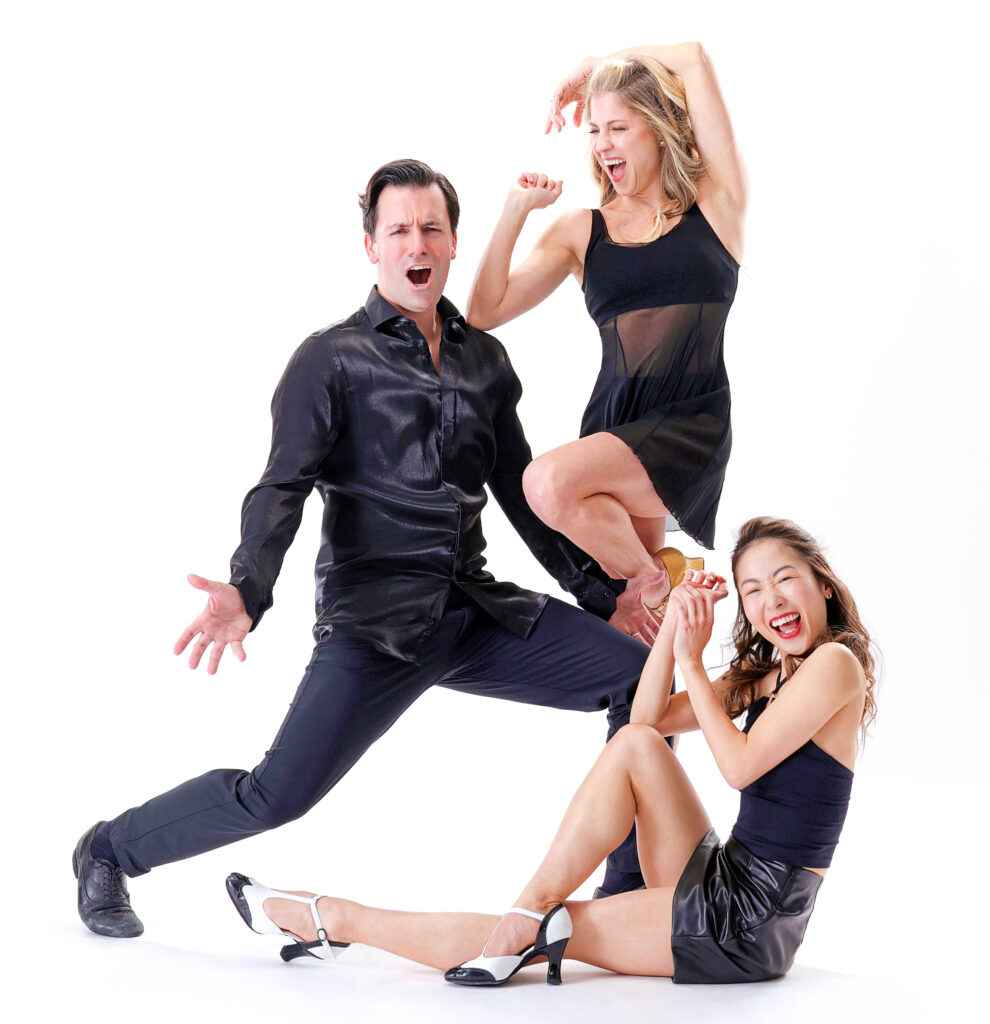
And a cookie-cutter approach wouldn’t work for this show anyway, given the diversity of its characters. “There are vast amounts of varied styles of choreography,” Stroman says, “because our city is varied, with many different types of people.” Expect salsa, ballet, jazz, “and good old musical-comedy character dancing,” she says—as well as tap-dancing construction workers, who reflect the urban soundscape—“the sound of metal, everything that goes on with building construction.” The ballet moves are for Fitzgerald and former New York City Ballet principal Stephen Hanna, who play newlyweds having “lyrical romantic moments in the midst of the chaos of New York.”
Amid the chaos and the lyricism, there will also be the indelible, eye-popping dance sequences Stroman is known for. “I try to create some kind of image that people will remember even if they don’t remember the show,” she says. “They’ll remember girls as basses”—from Crazy for You, which she revives this July in London—“they’ll remember little old ladies with walkers”—The Producers—“they’ll remember the girl in the yellow dress”—Contact. She won’t elaborate, but she promises “a couple of moments that have never been seen before” in New York, New York. And then there’s that song, which closed the movie and then closed dozens of Liza Minnelli concerts, dozens of Frank Sinatra appearances, and still closes every Yankees home game. No need to ask where it lands in the show.
Meet the Dancers
Clyde Alves, Cast as Tommy Caggiano
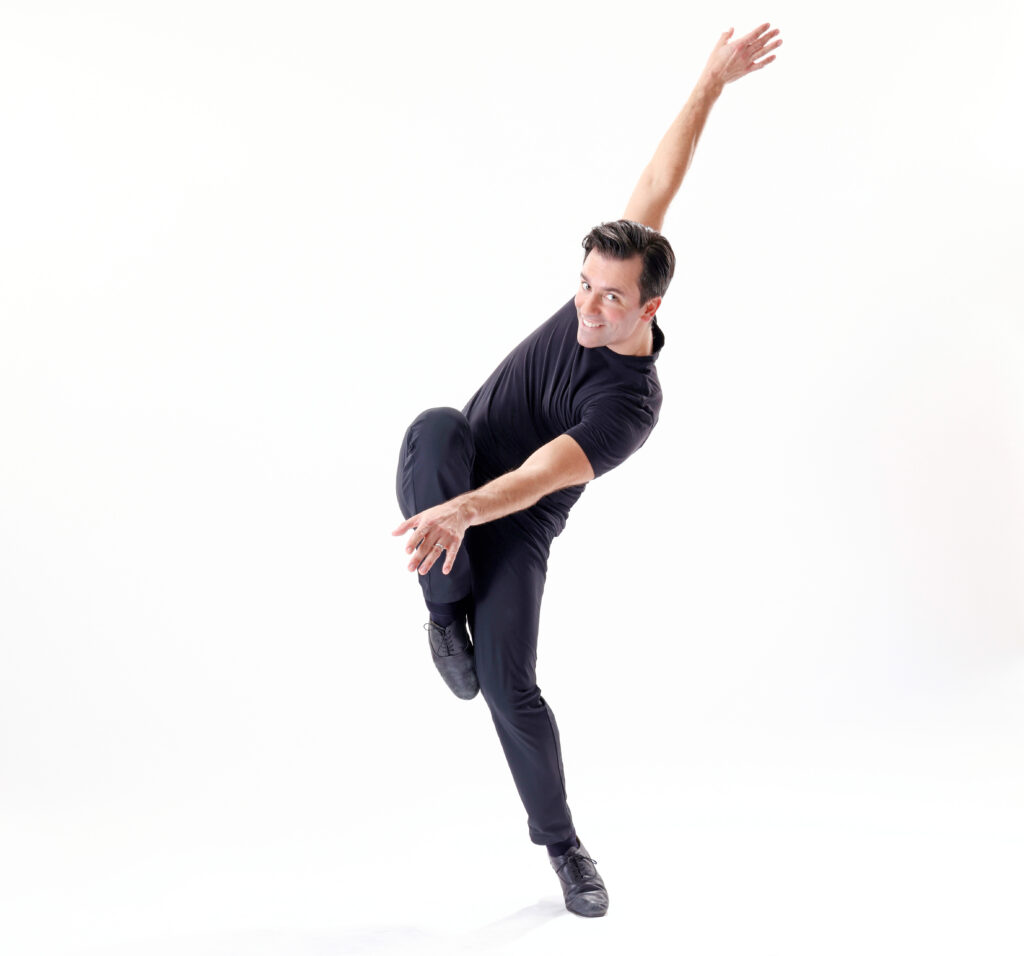
Almost 25 years in the business, and he’d never gotten a show without auditioning. But Clyde Alves (rhymes with “calves”) picked up the phone, and Susan Stroman was telling him that she’d gotten the rights for a musical based on the film New York, New York, and that there was a colorful, street-smart character in it named Tommy Caggiano, and what did he think? After three Broadway outings with Stroman, they have “quite a working dialogue with each other,” he says. He told her, “Whaddya mean whaddoI think? I’ll do it.”
With no audition stress, he found himself workshopping the show last year, and officially cast as Caggiano. The first read-through with the Broadway cast, some of whom hadn’t done the workshop, was “mind-blowing,” he says, the new actors opening new windows on the piece.
It wasn’t Alves’ first light-bulb moment. His destiny hit him like a lightning bolt, he says, when, at age 7, he wandered into his basement in Brampton, Ontario, and saw Mikhail Baryshnikov and Gregory Hines on TV dancing in White Nights. “I’d never seen that before, men doing something equal parts athletic and artistic,” he says. He went upstairs to announce that he wanted to take dance lessons, like his younger sister. When his mother told him she’d signed him up for tap and jazz, he said “What about ballet?” and started crying. By 10 he was commuting to Toronto for class at Canada’s National Ballet School. But he wasn’t there long before the school asked him to quit taking tap and jazz to commit to ballet, and he was ultimately released from the program due to his other after-school activities. At 16 he was commuting again, this time to perform in the ensemble of the 1996 Toronto production of Beauty and the Beast.
Alves’ days of learning ensemble tracks are long past, and he feels a bit sheepish about how quickly the career dominos fell into place for him. By 19, he says, “I could see that I wanted to make it on Broadway, maybe in five or 10 years.” Instead, he lucked into an audition in New York City when Stroman was casting her 2000 Music Man, and Alves made his Broadway debut at 20, as the teenaged Tommy Djilas. Gravity-defying young men became his specialty, culminating in his 2014 starring role in On the Town. Tommy Caggiano has a lot more mileage on him than those guys, he says, and “he’s got his head on straight.”
The character’s maturity and steadiness resonate with Alves, who is married to Broadway standout Robyn Hurder, currently performing in A Beautiful Noise. It’s the first time in years that they’ve been on Broadway simultaneously—they’d been alternating so that one could be home with their son, Hudson, now 9. New York, New York takes its characters through 12 months of a year, as their lives and the seasons change. “There are so many themes in this show that are speaking to me,” he says.
Ashley Blair Fitzgerald, Ensemble
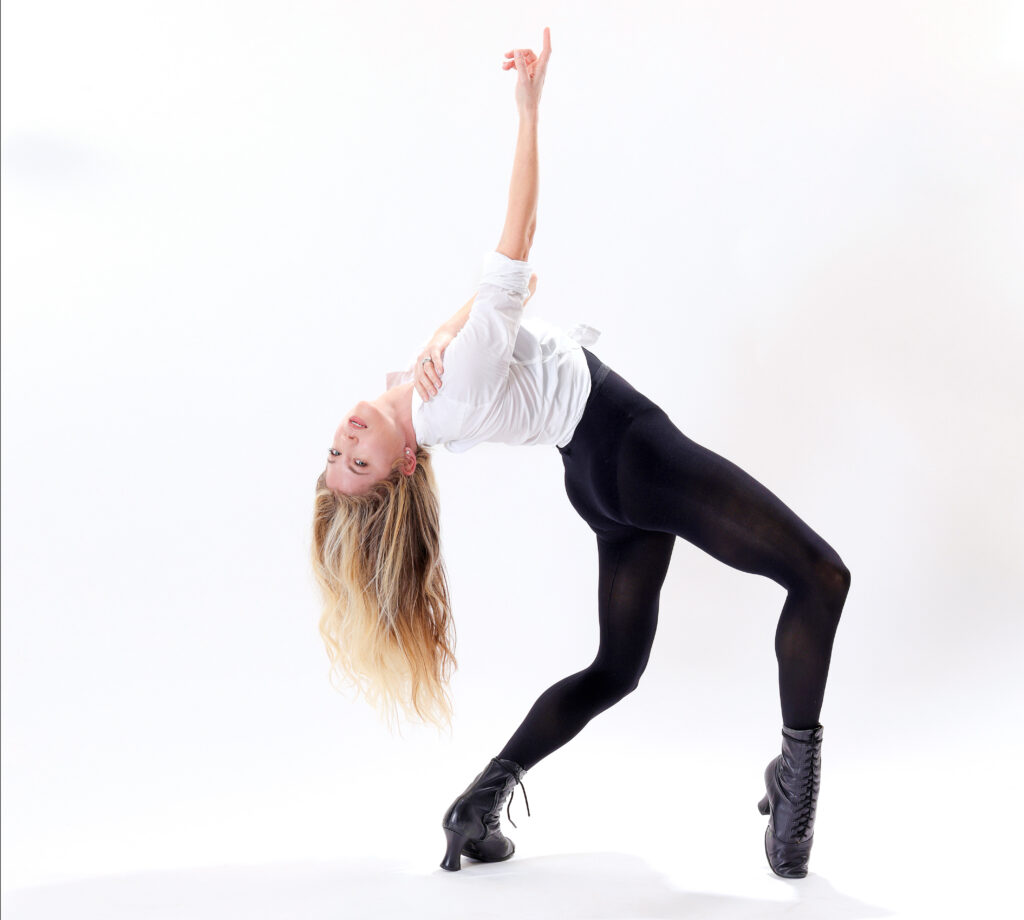
When she first heard about Susan Stroman’s New York, New York, Ashley Blair Fitzgerald declined to audition. “I can’t tap like Stro wants someone to tap,” she supposed. But unbeknownst to her, the director-choreographer had caught Fitzgerald’s Chita Rivera Award–winning turn as The Dark Lady in The Cher Show and wanted to work with her. Short story shorter, Fitzgerald didn’t just join the cast; she got to work with Stroman for two weeks of pre-production.
The crash course in Stroman’s style gave her “some intimate time with her, to see how she works, what she likes, what she doesn’t like,” says Fitzgerald. “Once you get in the big room, it’s a different scope.” When a step gave her a bit of trouble, the vibe was “We’ll get there, we’ll figure it out.”
Fitzgerald started figuring it out in Columbia, Maryland, studying with Shannon Torres at Ballet Royale Academy, which had funneled dancers into American Ballet Theatre, Alvin Ailey American Dance Theater and Dance Theatre of Harlem. But her heart was set on Broadway—her idols were Ann Reinking and Ann-Margret, and she spent six summers at Reinking’s Broadway Theatre Project, working with Reinking and Gwen Verdon and “everybody under the sun.” She did one semester as a dance major at the Boston Conservatory, but after workshopping what ultimately became the 2003 Burt Bacharach–Hal David revue The Look of Love (with Reinking) and getting an invitation to join the tour of Fosse, her school days were over. By age 19, she’d gone pro, doing Broadway tours, off-Broadway shows, regional theater and Radio City’s Christmas Spectacular.
She finally performed in a Broadway opening night at 30, when Joshua Bergasse, who’d used her in the TV series “Smash,” hired her for Gigi. But the years she spent touring the choreography of Twyla Tharp, Andy Blankenbuehler, Jerry Mitchell and others, and working in New York with the Verdon Fosse Legacy, deepened her artistry, she says. Fosse’s work, in particular, feeds her soul: “Every time I dance it,” she says, “I discover a new story I haven’t told yet, that I didn’t know I had to tell. I discover who I am and who I can be.” In New York, New York, she and her dancing partner (and longtime friend), former New York City Ballet principal Stephen Hanna, play Utah newlyweds discovering New York City, and she says Stroman’s rapturous ballet, swing and soft-shoe moves make them “the pure heartbeat of the show.”
Despite her bustling career and busy home life—she’s the mother of 5-year-old Eden and 2-year-old Rowen—she’s still a class hound. “I’m at Steps on Broadway five days a week,” she says, “taking ballet or jazz or whatever. Anything.” And she doesn’t mention tap.
Akina Kitazawa, Dance captain and swing
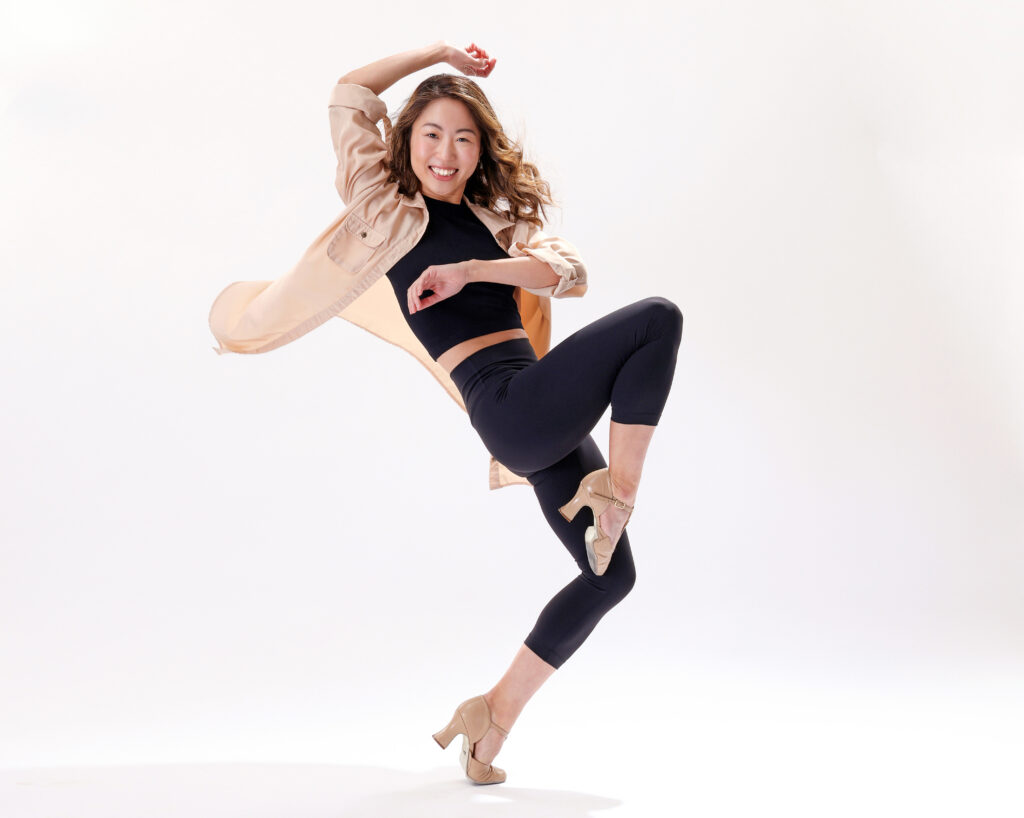
In 2014, after Akina Kitazawa’s flight from Tokyo landed at JFK airport and she’d dropped off her luggage where she’d be living during the Ailey Summer Intensive, she went directly to Times Square. She looked around with excitement and awe at the throngs and lights and traffic, thinking, This is it!
That flood of emotion overwhelmed her again as she read the opening number in New York, New York’s script, with its newcomers to the city picturing everyone in the crowd cheering for them in some imagined future. “I almost cried,” she says. “It’s about me!” And the future she imagined nine years ago is now upon her: She’s a swing and dance captain on a Broadway show directed and choreographed by her idol, Susan Stroman. With so much to learn, she feels her head “is about to explode.”
“I’m the luckiest girl in the world,” she says. “It’s really hard to survive in this business, and, somehow, here I am.” It wasn’t all luck, of course—Stroman says her dancing is “extraordinary.” Still, talent is only part of the equation for non-U.S. citizens who want to work stateside. Back in 2018, Kitazawa booked an ensemble role in The Phantom of the Opera, but the job didn’t meet the strict standards set by Actors’ Equity for immigrants (it helps to be a star), and she wasn’t allowed to join the union. But rule changes made during the pandemic allowed her to join for New York, New York with no problem.
When Kitazawa came to New York City for the Ailey intensive, she was 21 and hadn’t been able to find a niche for her dancing in Japan, where she’d started out as a competitive ballet dancer. She found her niche that summer, not at Ailey but on weekends, which she spent taking classes at Steps on Broadway. She wasn’t totally surprised—YouTube videos of Broadway musicals had been “the start of me getting interested in New York,” she says. She returned home knowing three months hadn’t been enough, and she moved to New York at the beginning of 2016 as a student in the Steps International Independent Study Program. Juggling visas and union rules, she slowly built a resumé of regional musicals and non-Equity gigs in New York. One of those was another dream come true: After trying and failing to book Radio City’s 2018 Christmas Spectacular show, she passed the grueling audition and danced on the legendary stage up to 17 times a week during the 2022 season.
With the ongoing pandemic, her parents weren’t able to see her perform, and she hasn’t been back to Japan to see them. Will they come to the opening night of New York, New York? “They have to,” she says. “It’s my Broadway debut!”
